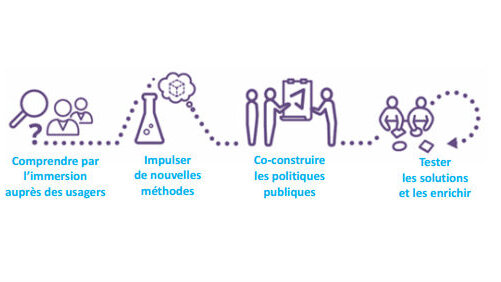Identifying Public Sector Innovation Strategies

This blog was co-authored with former OPSI intern, Théo Bourgery
“What does innovation mean to you?” This is a common topic when you speak to public servants about innovation – what is it really about, what does it really mean. And it is always interesting to hear the different views and perspectives, and the degree to which the answers vary. Yet these differences in opinion are not mere curiosities – they matter and can have real world impacts. How innovation is understood, what people believe about it, how they relate to it – all of this affects what people see as and believe is possible, and thus shapes and influences how they act. What individuals and think about innovation helps set the scene for what is possible in regards to public sector reform.

However, if what we think about innovation matters at an individual level, then it can be even more important at a government or system level. How governments see innovation, what they think it is needed for (or not), and what they expect from innovation will have a big impact on how everyone else sees innovation. So working out what governments and public services think and believe about innovation is crucial.
The easiest way of trying to gauge what innovation means to a government is to look to the tangible manifestations of that belief – e.g. strategies, policies and processes. While such documents will not necessarily provide the full reality of how innovation is thought about and acted upon, they do provide an indication of priorities, of beliefs, and of the signals that are being sent to public servants.
For instance, the French Secretariat-General for Government Innovation, which falls under the supervision of the Prime Minister’s Office, singled out five challenges to public sector innovation it chose to confront in its latest L’Innovation Publique: Concevoir Autrement les Politiques Publiques (Public Innovation: Apprehend public policy differently). By laying out the necessary reforms, it ultimately sends a clear message to public servants that true innovation can see the light of day, and that public innovators are welcome in the French administration. In doing so, it shows its willingness to adapt and change.
Of course, over time the approach to innovation in a country will change and evolve. This reflects not only the political realities that different leadership will have different approaches and beliefs about the need and role for innovation and how it should occur, but also that innovation is an evolving practice. As more is learnt about innovation, it is likely that institutional approaches will evolve, aside from any political changes. Therefore, it is also interesting to recognise and consider the different strategies that may have arisen over time. A good example would be the US’s National Partnerships for Reinventing Government, under the Clinton Administration. The Obama Administration followed suit with its Strategy for American Innovation, which focused – among a variety of topics – on “delivering innovative government with and for the People”. More recently the Office for American Innovation has been introduced by the Trump Administration, but has not yet articulated a formal government-wide strategy.
These government strategies, and the associated efforts (both structural and financial), can act as a significant impetus for change, for looking at new ways of doing things that might previously have been thought off-limits.
This is not all. Such government agendas, in a sense, target two types of public servants. Innovators-at-heart can find the institutional support and “top cover” to try new things and respond to the challenges of their fields. More importantly perhaps, it also calls on public servants to discover, and be confronted by, innovative processes. It defines a framework and vocabulary in which innovation means something. It provides the necessary foundations on which public servants can build new ideas and supply the public sector with new and better ways of doing things.
These innovation strategies can take very different shapes and forms. The key is that they provide some clarity about the role of innovation and the expectations of the public sector when it comes to innovation.
In short then, innovation strategies are a useful lens for understanding what governments think about innovation and how they perceive it and value it.
In light of this important role that strategies can play, we are building a database of government innovation strategies, past and present (and future if applicable). Below is a preliminary list that we have compiled, and that we are seeking your assistance in adding to. If you know of any public sector innovation strategies we have missed, please do share it with us by shooting us an e-mail!
Australia:
- Innovation Action Plan (Victorian State Government, 2009)
- Australian Public Service Innovation Action Plan (2010)
- National Innovation and Science Agenda (2015)
- Support for Public Sector Innovation in the APS (2015)
- National Innovation and Science Agenda (2015)
- “Putting Innovation in Motion” Public Sector Innovation Strategy (Victorian State Government, 2017)
Canada:
- Blueprint 2020 (2014)
- Experimentation Directive (2016)
Denmark:
- “Denmark 2020” Action Plan (2010)
Finland:
- Government Policy Analysis Unit (2004 – reformed in 2014)
- “Strategic Programme” on Experimentation, Innovation and Digitalisation (2015)
- “Place to Experiment” Platform (2017)
France:
- “Référentiel Marianne” (2008)
- First Minister in Charge of Digital Developments and Innovation (2012)
- “L’Innovation Publique: Concevoir Autrement les Politiques Publiques” (2017)
Japan:
- Creation of the Incorporated Administrative Agency (IAA) system (2001 – reformed in 2014)
- Japan Revitalisation Strategy’s “Intensive Reform Plans” (2014)
South Korea:
- Presidential Commission for Administrative Innovation (1995-Present)
Spain:
- Plan de Choque para El Impulse de la Administración Electrónica en España (2003)
- Avanza 2 2011-2015 (2010)
Sweden:
UAE:
US:










